
James Najarian, “Alexander Burnes’s Travels into Bokhara (1834)”
Alexander Burnes’s Travels into Bokhara (1834) is a foundational text of the British fascination with Central Asia, both in a geopolitical sense—the “Great Game” of the rivalry between Britain and Russia in Asia—and in a literary one. It is the most prominent of many travelogues of Afghanistan and Central Asia that relate experiences from the late 1820s to late 1830s, preceding the First Anglo-Afghan War (1839-42). Burnes’s Travels sold well and were immediately translated into French. For a time “Bokhara Burnes” was a literary celebrity. Yet the sensation of his Travels led him to another, less successful appointment in Kabul and finally to his third and final appointment there, as British envoy during the war. Not only was Burnes Britain’s leading Afghan expert; he also became the Afghans’ leading target. His murder sparked the course of the British rout. With a turn to his Persian secretary Mohan Lal Kashmiri’s account of the same travels in his Travels in the Panjab, this paper examines Burnes, his career, and his Travels in order to understand the events and his text’s role in them.
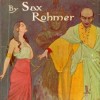
Shanyn Fiske, “Modeling Masculinity: Engendering the Yellow Peril in Fu-Manchu and Thomas Burke’s Limehouse Nights”
This entry deals with the event of the Yellow Peril, which generated fears of “Chinamen” as sexual predators, savage murderers, and criminal masterminds plotting world domination. Curiously, while these images lend Chinese men an aura of powerful virility, popular fiction credited with sensationalizing the Yellow Peril often depicted them as asexual or effeminate. Focusing on the first three novels of Sax Rohmer’s Fu-Manchu series and Thomas Burke’s Limehouse Nights (1916), I challenge the common critical assumption that the feminization or desexualization of Chinese men served to symbolically disempower a political threat. Instead, I suggest that in their interactions with their white counterparts, effeminized and / or desexualized Chinese male characters highlight problems in turn-of-the-century reconfigurations of masculinity. Such problems included recalibrating the Victorian balance between gentlemanly restraint and soldierly aggression in an unstable imperial context; redefining a sense of autonomy in a mechanized world; and renegotiating gender relations in a feminist environment. More broadly, I venture that the critical apparatus of Orientalism, which a number of theorists have applied to Rohmer’s works, is inadequate in explaining the complex interactions between Chinese and Britons in the early twentieth century. In examining the entangled racial and sexual tensions in these works, this entry historicizes the Yellow Peril within a broader context of Western male self-fashioning.

Wendy S. Williams, “‘So Very Japanny’: The British Reception of The Mikado in 1885”
This article examines the writings of The Mikado producers and opera reviewers in 1885. It shows that the British were eager to create a quaint, picturesque, “authentic” image of Japan, based on familiar art objects, in order to ease national anxiety about a quickly developing country that was difficult to understand.
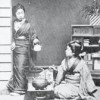
Wendy S. Williams, “‘Free-and-Easy,’ ‘Japaneasy’: British Perceptions and the 1885 Japanese Village”
This essay examines press reviews and accounts of the Japanese Village in London from newspapers and periodicals in 1885. These show that although writers were fairly confident that they “knew” the Japanese culture, they had only a superficial understanding of it, and they often depicted Japanese people as simple, coarse, and inferior. These writings largely reflect British feelings of superiority, enchantment, and confusion regarding Japan, a quickly progressing country that was not easy to classify.
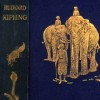
Mario Ortiz-Robles, “Animal Acts: 1822, 1835, 1849, 1850, 1854, 1876, 1900”
What does the history of animal rights have to tell us about Victorian Britain – and how do legislative gains, specifically Parliamentary Acts, appear when read in tandem with theatrical performances and literary depictions of animals? This article reads the former category alongside the latter two, paying particular attention to how artistic representations of animals, including Rudyard Kipling’s The Jungle Book, blur the lines between human and animal behavior. In doing so, it sheds light on how animals were figured as part of a racialized discourse, using Foucault’s notion of biopower to help frame the complex ways animal rights, and animalism, were portrayed in politics and culture.

Erika Rappaport, “Object Lessons and Colonial Histories: Inventing the Jubilee of Indian Tea”
The fifty-year Jubilee of Indian tea was celebrated in the Spring and Summer of 1887, coinciding precisely with Queen Victoria’s Golden Jubilee. This Jubilee had nothing to do with Victoria per se, but rather the commercial anniversary invented Indian/Ceylon tea as an icon of imperial Britishness. Industry leaders used 1887 to highlight specifically two key events in tea’s commercial and imperial history, the first moment tea arrived in Britain from Assam (1837) and the first time (April 1887) that tea from both India and Ceylon surpassed imports from China. They explained the later development by arguing that Britons had learned to appreciate modern industrial production and plantation agriculture more than old-fashioned and dirty Chinese modes of production. The Jubilee thus marked publicly how and when tea became a mass-produced and consumed imperial product.
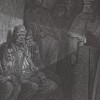
Heidi Kaufman, “1800-1900: Inside and Outside the Nineteenth-Century East End”
This essay examines depictions of one of the infamously well-known region of London called “The East End.” Scholarly and popular discussions of this part of the city have been dominated by texts emphasizing the East End’s seedy or sensational social and economic features. In particular, popular writing has focused on the history of poverty, crime, and resident “alien” or immigrant groups living in the East End. While such stereotypes were often loud in their sensationalism, and while they often overpowered competing narratives, this essay makes the case for reading them alongside a range of narratives about the East End, many of which were produced by residents of this part of London. In what follows, I consider a mix of insider and outsider lenses, of well-known and lesser-known voices that produced a varied range of depictions of the nineteenth-century East End. In the process, I argue that the East End ought not to be characterized as simply a site of crime and poverty. To understand this important part of London, we must instead examine a fuller range of voices emerging from disparate, often competing, perspectives. Through this mix, we can begin to register the East End’s economic, cultural and social diversity witnessed and described in discordant ways by visitors and residents alike.

Ann Curthoys, “Settler Self-Government versus Aboriginal Rights, 1883 – 2001: The Shocking History of Section 70 of the Western Australian Constitution”
This essay describes the failed attempt by the British government to retain control over Aboriginal policy even while establishing self-government for the colony of Western Australia. The British made the attempt through a clause (Section 70) in the colony’s 1889 Constitution, which provided that £5000, or one per cent of the annual revenue of the colony when it exceeded £500,000, be set aside annually for the welfare of Aboriginal people. In addition, the British-appointed and controlled Governor, rather than the colonial government, would manage Aboriginal policy. The settlers hated the clause and in 1897 succeeded in persuading the British government to repeal it. Yet Section 70 was not forgotten, a legal challenge in the Australian High Court to its repeal failing as recently as 2001. The story of Section 70 provides a window for viewing the conflicts and collusions between imperial authorities and their settler colonies on questions of Aboriginal policy.
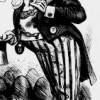
T. J. Tallie, “On Zulu King Cetshwayo kaMpande’s Visit to London, August 1882”
In August of 1882, the deposed Zulu monarch Cetshwayo kaMpande arrived in London to plead for the restoration of his kingdom, from which he had been deposed following the Anglo-Zulu War of 1879. Despite the ferocity of the war, particularly after Britain’s humiliating defeat at the Battle of Isandhlwana in January 1879, the newly elected Gladstone government sought to repudiate larger imperial goals and reversed their decision, approving Cetshwayo’s restoration. This article focuses on the depictions of Cetshwayo in the metropolitan press during his momentous 1882 visit.
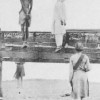
Priti Joshi, “1857; or, Can the Indian ‘Mutiny’ Be Fixed?”
In the 150 years since it occurred, little about the events that shook northern India in the waning days of the East-India Company’s rule has been fixed. The skeletal facts are seldom contested, but their meanings so disputed that what is known appears to recede. Take, for instance, the nomenclature: long known as the “Indian Mutiny,” the events under scrutiny were neither “Indian” (in any pan-Indian or collective sense) nor only a “mutiny.” Alternatives abound—Sepoy Mutiny; Sepoy War; Revolt of 1857; the Uprising of 1857; the Rebellion of 1857; the Great Rebellion; the First War of Independence—each offering an interpretive gloss on the May 1857-June 1858 events. This essay offers an overview of key nodes of debate—who participated and why? who led whom? how planned were the events? how unified were actors—in the current historiography of 1857.
